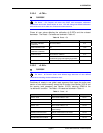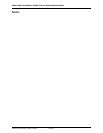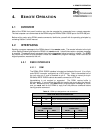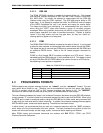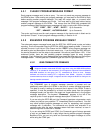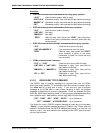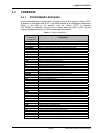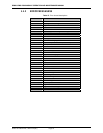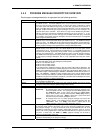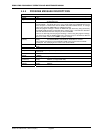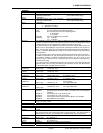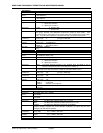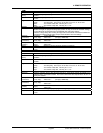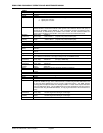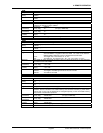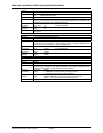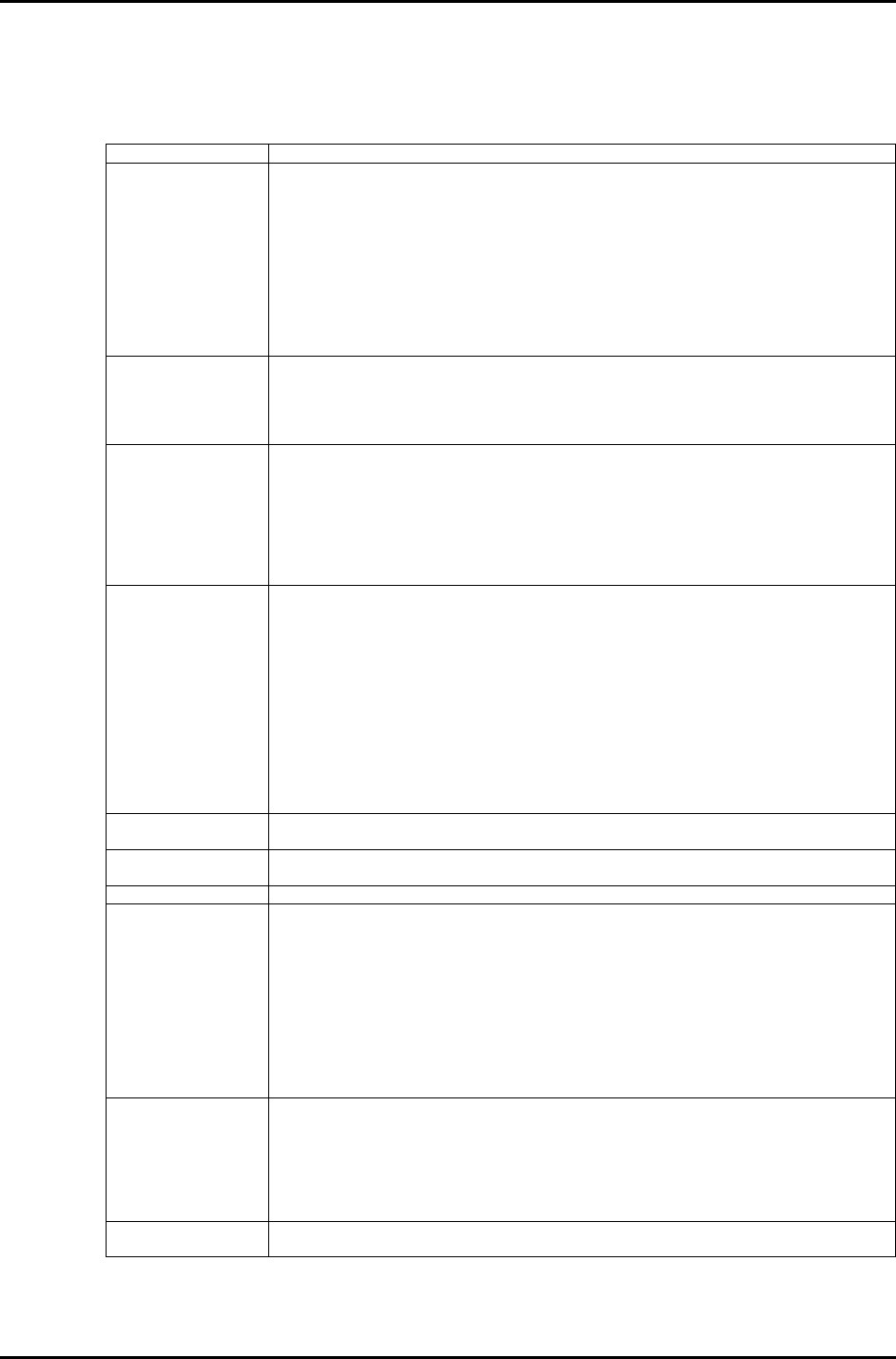
4. REMOTE OPERATION
Page 79 © 2007 DH Instruments, a Fluke Company
4.4.3 PROGRAM MESSAGE DESCRIPTION OVERVIEW
Each program message description is separated into the following sections:
Purpose A brief description of the programs message’s function.
Command This is the Enhanced program message syntax to send data to the RPM4 or to execute
an RPM4 function. The RPM4 must be set to use the enhanced format (see Section
3.5.2.3) to use the syntax and style shown. It may be sent alone, or followed by at least
one white space and additional argument(s) to show that arguments can be passed. If
there are multiple arguments, then commas must separate them. If you are using the IEEE-
488 port, multiple command type program messages can be sent in one message if you
separate them with a semicolon. There will be no reply from the RPM4 using the IEEE-
488 port unless the command is immediately followed by the query operator “?”. If you
are using the COM1 port, the PPC1 will reply and you must wait for this reply. If this field
is not listed in the program message description, then the Command type is not supported
when using the Enhanced format.
Query This is the Enhanced program message syntax to request data from the RPM4. The RPM4
must be set to use the enhanced format (see Section 3.5.2.3). The RPM4 will always
reply to a query. You must wait for this reply before issuing another program message.
If this field (Query) is not listed in the program message description, then the Query type
for the program message is not supported when using the Enhanced format.
Classic This is the Classic program message syntax to send data to the RPM4, to execute an
RPM4 function, or to query for data. The RPM4 must be set to use the classic format
(see Section 3.5.2.3). The command may be followed by a ‘(=)’ and additional argument
characters to show that argument(s) can be passed. If there are multiple arguments, then
commas must separate them. The RPM4 will always reply to a Classic program message.
You must wait for this reply before issuing another program message. If this field is not listed
in the program message description, then it is not supported when using the classic
format.
Suffix Some commands support an optional suffix. This suffix is used to specify a Q-RPT to which
the command applies, since many settings are Q-RPT specific:
Suffix of ‘1’ for Hi Q-RPT access
Suffix of ‘2’ for Lo Q-RPT access
Suffix of ‘3’ for HL Q-RPT access.
If an optional suffix is allowed but not given, then the “Active Q-RPT” will be addressed. The
“Active Q-RPT” is the Q-RPT that is currently displayed on the top line of the front panel of the
RPM4, and is identified by the text label in the upper right of the pressure display screen. The
last Q-RPT ranged or selected using the “RANGE” or “ARANGE” commands is the “Active” Q-
RPT. The “ARANGE”, “RANGE” or “RPT” command query can be used to determine which
Q-RPT is currently active. With the Hi Q-RPT In differential mode of operation, there are some
limitations on access to the Lo Q-RPT, and with the HL Q-RPT there are limitations on access
to both the Hi and the Lo Q-RPTs independently.
Arguments If the program message can be used to set data inside the RPM4, then this section describes
the arguments and their limits.
Default If the program message can be used to set data inside the RPM4, then this line shows
(using the enhanced format) the default setting from the factory.
Remarks This field has the details and remarks about the command.
Example Examples are given for the enhanced and classic methods.
Enhanced: An example of the use of an enhanced format program message to be
sent to the RPM4 is shown. The message sent to the RPM4 appears after
the “Cmd sent:” label. If only a Query type exists, the “Query sent:”
label is shown instead. Directly under this label, “Query reply” shows a
typical reply to a query type. “Reply:” shows that a query format does
not exist. It may have a short description next to it.
Classic: An example of the use of a classic program message to be sent to the
RPM4 is shown. The command sent to the RPM4 appears after the
“Cmd sent:” label. The “Reply” label shows a typical reply to the
“Sent” example. It may have a short description next to it.
Errors If the program message can report an argument error, the types of errors are listed.
If using the classic format or the COM1 port, the error message is replied after receiving
the program message. If using the enhanced format via the IEEE-488 port, the error
condition is handled by the status reporting model which stores the errors in an Error
Queue and can be programmed to assert the IEEE-488 SRQ line to signal an error has
occurred. In either case, the “ERR” or “ERR?” program message can be used to
retrieve a text description of the error.
See Also Indicates related commands (“----“) and refers to manual sections giving detail on RPM4
operation corresponding to the program message.



